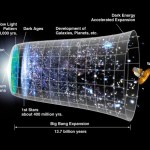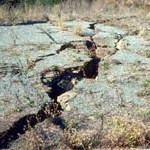Physical Sciences
A Higgs Setback: Did Stephen Hawking Just Win the Most Outrageous Bet in Physics History? | Guest Blog, Scientific American Blog Network
Overblown anti-Higgs hype, just for balance.
News: Breaking Bread - Inside Higher Ed
"For the project, students were asked about their views on the state of race relations on campus. Not surprisingly (as this is the case at many places), the views of white students about the state of race relations were generally much more positive than those of minority students. Then the sociologists looked at what factors were linked to whether students had a more…
One of the things that distinguishes evidence-based medicine (EBM) and science-based medicine (SBM) is how the latter takes into account prior probability that a therapy is likely to work when considering clinical trials. My favorite example to demonstrate this difference, because it's so stark and obvious, is homeopathy. Homeopathy, as regular readers of this blog no doubt know by now, is a mystical, magical system of medicine based on two principles. The first is the law of similars, commonly phrased as "like cures like"; i.e., the way to treat symptoms is to use a smaller amount of…
"Integrative medicine" further evolves into "evidence-based complementary medicine." Nothing changes
One of these days I'm going to end up getting myself in trouble.
The reason, as I've only half-joked before, is that, even though I'm not even 50 yet, I'm already feeling like a dinosaur when it comes to "complementary and alternative medicine" (CAM) or, as it's called more frequently now, "integrative medicine" (IM). These days, we now have the National Center for Complementary and Alternative Medicine (NCCAM), the Bravewell Collaborative, and a number of other forces are conspiring to "integrate" quackery with real medicine. As part of that task, it's been necessary to rebrand quackery, a…
This guest post is by Brookhaven Lab physicist Steve Kettell, the Chief Scientist for the U.S. Daya Bay Neutrino Project in southern China. Kettell received his Ph.D. in 1990 from Yale University and is the leader of Brookhaven's Electronic Detector Group.
Steve Kettell
Neutrinos are downright weird!
Produced in prodigious numbers in the sun, supernovae, nuclear reactors and particle accelerators, neutrinos are extremely hard to detect because they hardly interact with other material at all.
If we think about photons from the sun hitting blacktop during the summer, it is quite obvious…
Chip Le Grand, Victorian editor of The Australian, complains that Stuart Rintoul was victimized by Media Watch. Just like Rintoul, Le Grand misrepresents Watson's paper:
[Rintoul] brought to national attention research by NSW researcher Phil Watson showing that sea levels around Australia over the past 100 years haven't risen as quickly as scientists would have expected them to as a result of global warming.
This isn't true. Watson did not compare the sea level rises with expected sea level rises as a result of global warming. As Kathleen McInnes of the CSIRO told Media Watch:
The study by…
A reader asked me about the hyperbolic trig functions, sinh(x) and cosh(x). What are they for, and do they have an intuitive interpretation in physics?
That's a pretty good question. After all, most of the time you first meet the hyperbolic trig functions in intro calculus, where their rather odd definitions are presented and then used as test beds for blindly applying newly-learned differentiation rules. Ok, great. But what are they really?
To answer the question, we should start off with Euler's identity, which relates the exponential function with the regular trig functions. Proving this…
"And all your future lies beneath your hat." -John Oldham
Yes, with all the space, astronomy and astrophysics I do here, I can still recognize that there are things of great beauty and importance happening here on the lower 50% of our gaze. For this weekend, I've got a sweet song by Railroad Earth:
Neath The Stars.(Railroad Earth is great live, by the way. Don't miss your chance to see them if you get one!)
Well, beneath the ground, in many places across the world, lie a series of underground caves. The most spectacular one I've ever been to is Kartchner Caverns in Arizona, spectacular…
Once upon a time, there was quackery. It was the term used to refer to medical practices that were not supported by evidence and were ineffective and potentially harmful. Physicians understood that modalities such as homeopathy, reflexology, and various "energy healing" (i.e., faith healing) methodologies were based either on prescientific vitalism, magical thinking, and/or on science that was at best incorrect or grossly distorted. More importantly, they weren't afraid to say so.
Quacks did not think this good.
Then, sometime a few decades ago, supporters of quackery decided that they would…
I've got a ton of stuff to do this morning that will keep me from more substantive blogging, so here's a cute toddler picture:
This is SteelyKid playing with the giant magnet in the MRI exhibit at the Schenectady Museum, trying to see how big a tower she could make out of steel washers and hex nuts (answer: 11 hex nuts before it fell over). She also greatly enjoyed tossing washers at the magnet and seeing them snap to it (I was more interested in tossing them so they got deflected but missed the magnet body, and shot off into the wider room. I doubt the other patrons would've guessed…
Towards an Opt-Out Button in Left-Liberal Debates | Easily Distracted
"Here's what I want and I think maybe a lot of people, both Americans and otherwise, want. I want what my colleagues Barry Schwartz and Ken Sharpe call "good enough". I don't want to grab for the brass ring, be the alpha male, see my name in lights, have the penthouse apartment on the East Side. I don't want to write out a lengthy policy manifesto on what American foreign policy towards 21st Century African states should be and then spend the next ten years taking meetings and writing op-eds to push my plan. I just want…
Keeping the week's unofficial education theme, Kevin Drum posts about the latest "kids these days" study, namely the just-released NAEP Geography results. Kevin makes a decent point about the 12th grade questions being fairly sophisticated, but includes one comment that struck me as off base:
I gotta tell you: I went through the five sample questions for 12th graders, and they were pretty damn hard. This was not "identify France on a map" stuff. I ended up getting them all right, but I was half guessing on some of them.
He says that as if it's a bad thing, but it seems to me that it's really…
"We all want progress, but if you're on the wrong road, progress means doing an about-turn and walking back to the right road; in that case, the man who turns back soonest is the most progressive." -C. S. Lewis
Many of you are a little bit skeptical that I talk about things like the History of the Universe, Inflation, Dark Matter and Dark Energy like they are absolute certainties. After all, isn't it true that there are an awful lot of assumptions that we make in order for these things to be true?
Image credit: NASA.
Absolutely!
That's right, I admit it. We make assumptions when we come up…
"Sometimes I don't want to see the puppeteers,
sometimes I just want to see the magic therein,
and sometimes I just want to pry open the atoms
and know why they spin." -Glen Sutton
But it isn't just the atoms -- the minuscule building blocks of matter -- that spin. It's also the individual galaxies, collections of some mind-boggling number (like 1068) of atoms, that spin.
Image credit: Jean-Charles Cuillandre, Giovanni Anselmi and the CFHT.
Messier 95, above, is just one such example. But how did these galaxies get to be this way?
To answer this question, we have to go all the way back to…
House subcommittee on Science etc has reported out and full committee is scheduled to vote on the 13th.
JWST cut is formally in as are various other interesting snippets.
The subcommittee report (pdf large) - ie the appropriations by agency recommended to the full committee
Summary Table (pdf) - handy dandy difference between 2012 actual appropriations vs 2011 actual and 2012 requested, respectively.
Remember: this is the subcommittee recommendation to the committee, that gets voted on, then sent to House, then Senate does its thing, then it goes to conference to reconcile.
Change can…
(Note: This was not prompted by any particular comment. Just a slow accumulation of stuff, that turned into a blog post on this morning's dog walk.)
It's been a couple of years now that I've been working on writing and promoting How to Teach Physics to Your Dog, so I've had a lot of conversations where the subject of writing a popular audience book on quantum physics comes up. I've had enough of these now that I can recognize a few different categories of responses, one of which drives me up the wall. I suspect that the same is true for most pop-science authors, so as a public service, let me…
Christopher Monckton was so annoying when interviewed by Adam Spencer that Spencer hung up on him before finishing the interview later on. The Australian was so impressed by Monckton's performance that they posted a partial transcript. Moth at New Anthropocene corrects many of Monckton's misrepresentations, so I'll just cover what was in the transcript posted by The Australian -- presumably they think those are his strongest points.
Spencer: Can I just clarify sir, are you a member of the House of Lords?
Monckton: Yes, but without the right to sit or vote.
Spencer: Because the House of…
Third of the five research categories within DAMOP that I talked about is Quantum Phenomena. This is a little bit of a catch-all, as there are a few different things going on in this area. They are all unified, though, by the fact that they end up making quantum mechanical effects manifest in some way, either as a means to an end, or just for the sake of showing that quantum mechanics is really weird.
What do I mean "making quantum mechanical effects manifest?" Basically, demonstrating one of the essential elements that I talked about last year: showing the wave nature of matter,…
The second in the DAMOP research categories I talked about is "Extreme Lasers," a name I was somewhat hesitant to use, as every time I see "Extreme [noun]," I get a flash of Stephen Colbert doing air guitar. It is, however, the appropriate term, because these laser systems push the limits of what's possible both in terms of the pulse duration (attosecond pulses are common, with 1as = 0.000000000000000001 s) and the pulse intensity (1014 W/cm2 is a typical order-of-magnitude, and some systems get much higher than that).
One of the main tricks for generating these ultra-short pulses is to do…
By Dr. Friedemann Freund; Carl Sagan Center for the Study of Life in the Universe, SETI Institute, and Gail Jacobs
Friedemann Freund doesn't shrink from taking on the really big problems. His research has elucidated such important phenomena as the fact that rocks under stress behave like batteries that can produce currents deep within the crust of the Earth. These are not piddling electron flows, either - the currents could be as large as millions of amperes, sufficient to be measured above ground, and perhaps even from orbit. Understanding and exploiting this phenomenon could lead to a…
The first of the five categories of active research at DAMOP that I described in yesterday's post is "Ultracold Matter." The starting point for this category of research is laser cooling to get a gas of atoms down to microkelvin temperatures (that is, a few millionths of a degree above absolute zero. Evaporative cooling can then be used to bring the atoms down to nanokelvin temperatures, reaching the regime of "quantum degeneracy." This is, very roughly speaking, the point where the quantum wavelength of the atoms becomes comparable to the spacing between atoms in the gas, at which point the…





